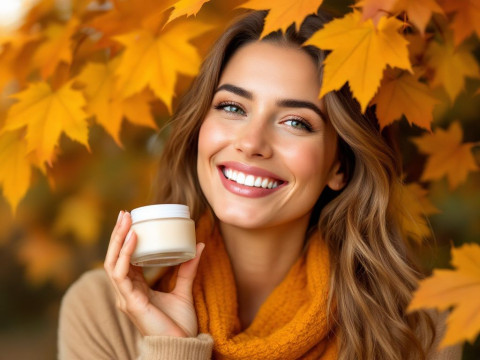Ever find yourself in the kitchen gearing up for a marathon cooking session and by the end of it, you feel completely drained? Like your energy has been zapped by your stove, and don’t even get me started on the acres of dishes you have to conquer afterward! Alright, let’s be real. Spending time in a kitchen for long periods—whether you’re prepping meals for the week, hosting a dinner party, or experimenting with that intricate recipe you saw online—can seriously take a toll. And ensuring you, and your creations, remain ‘untouched’ by the heat is crucial. So, how do you protect both your skin and sanity during these marathon sessions? Let’s dive into this action-packed guide on maintaining the perfect “cooking marathon skin.”
Why Does “Heat Protection” Matter In The Kitchen?
It might sound dramatic, but heat protection in your culinary kingdom is as important as making sure your knife is sharp! The kitchen heat can hit you in various surprising ways – from that sudden spurt of oil to the slow-broiling discomfort of standing next to a hot oven. Neglecting proper heat protection isn’t just uncomfortable (hello, sweat!)—it can lead to burns, exhaustion, and your own lack of enthusiasm to get creative with food.
The Sneaky Culprits of Heat Stress
- Overusing Direct Heat: Whether you’re leaning over a pot of boiling water or flipping pancakes on a griddle, direct heat press is trying to find its way to you. Being alert is only the beginning.
- Poor Ventilation: An often-overlooked culprit, inadequate airflow can turn your kitchen into a sauna. Your stovetop exhaust is the hero you didn’t know you needed.
- Layering Up: Against expectation, sometimes, it isn’t always the temperature gradient, but wearing the wrong attire. Overly restrictive or non-breathable fabrics are silently inciting sweat and discomfort.
- Chaos of Multitasking: Think juggling five dishes is smart multitasking? The moving around alone ramps up body heat and stress.
Let’s Get That Heat Protection Game Strong, Step By Step!

Step 1: Gear Up Like a Pro
We often undervalue those trusty tools hanging in the pantry. Having the right tools isn’t just for efficiency; it’s essential for safety.
- Aprons Are Your Friend: A proper apron isn’t just tradition—it’s armor. Choose one that’s breathable but designed to deflect splashes. Trust me, even the stain repellant ranges save you time, energy, and wardrobe.
- The Mitt Factor: From reusable silicone gloves to fabric pot holders with good insulation; these babies are the literal barrier between you and mishaps.
Step 2: Strategize Your Space (Be Wise)
A tidy, well-spread space dodges mess but setting yourself up well can buffer you from heat too.
- Work Some Magic with Layout: If possible, arrange your kitchen tools before the cooking starts. Try to keep similar tasks clustered—like chopping away from the stove, giving you a break from consecutive heat exposure.
- Play it Cool with Appliances: Your oven preheats but your fridge can at least temporarily store those made-ahead ingredients. Utilise it to reduce heat and clutter.
Step 3: Dress for Culinary Success

Your couture shouldn’t just be about presentation but defense!
- Light Fabrics and Loose Fits: Opt for cotton or linen during these marathon sessions. Food isn’t the only thing breathing in your kitchen—let your skin do a little gasping too.
- Hair Up, Aprons On: Keeping hair tied up isn’t just for hygiene; it prevents your skin from getting too clammy and keeps the focus on your handiwork, without interruptions.
Step 4: Master the Ventilation Art
Think of air as your unsung hero, for it should always move around, even if you’re standing still.
- Praise Your Hood Range: Right-size your hoods. Turn them on manually to effectively lib projects the stove heat away from you. Double-check filters aren’t clogged; give them a regular clean.
- Windows: The Undead Classic: If the weather is permitting, crack open a window or door. Your quaint kitchen becomes an oasis with the right breeze filtering through.
Step 5: Hydration and Energy Management

Simple, yet goes unnoticed way too often on the under-radar life-hacks list.
- Fluids Are Key: Keep water within an arm’s reach. Drinking dizzies you down and reflects positively on both stamina and skin. Add electrolytes for extended sessions; they’ll do more bang for your buck.
- Smart Snacking: Little energizers nab the dragging feel while cooking. A few nuts or cut fruit here and there keeps your blood sugar level friendly and the culinary spirit playful.
Standing Out: Tips for Endurance and Staying Engaged
Long-time cooking isn’t a sprint fixed to patience; it’s a thoughtful marathon celebrating both compliance and tactics.
- Craft a Playlist: Nothing boosts mood and pacing like good music. Change up your gadgets-heavy fever with groovy noise—it breathes life into your echoey and labor-driven kingdom.
- Take Intermitted ‘Breathers’: Never overlook small, habitual breaks for resetting tired muscles and cooling off nerves. Stand back, glance over your momentum, or even stretch behind the countertop.
Wrapping It Up
The kitchen is where both effort and enjoyment meet. Maintaining that “cooking marathon skin” isn’t simply protecting from burns and stains—it also means perfecting the tiny controls that make you capable and cool under challenge. After all, your kitchen repertoire isn’t merely marked by skill, but by how unburnt and content you feel thereafter. Just remember to have fun throughout. Dress smart, stay vigilant with tools, and, above all, enjoy being the culinary magician you’ve grown yourself to be. Cheers!
Frequently Asked Questions
What is a heat protectant?
A heat protectant is a specialized hair care product designed to shield your hair from the damaging effects of heat styling tools. It creates a protective barrier on your hair strands, reducing the impact of high temperatures and preventing moisture loss[1][3][5).
What are the benefits of using a heat protectant?
The benefits of using a heat protectant include preventing heat damage, retaining moisture, making hair more manageable, reducing frizz, and helping to preserve hair color. It also enhances styling by providing a smoother surface for heat tools and contributes to long-term hair health[1][3][5).
How does a heat protectant prevent heat damage?
A heat protectant prevents heat damage by forming a barrier between your hair and the heat source, cutting back on the level of direct heat that hits your strands. This reduces the risk of overheating, frizz, and split ends, and helps to keep the hair cuticles smooth and intact[1][3][5).
Can heat protectants offer additional benefits beyond heat protection?
Yes, many heat protectants offer additional benefits such as moisturizing and hydrating ingredients, UV protection, and enhancing the overall manageability and appearance of your hair. They can also help in preserving hair color and providing a smoother, frizz-free finish[1][3][5).
References- RevAir. (2023). Understanding Heat Protectants: Hair’s Best Friend.
- Evalectric. (2023). The Benefits of Using a Heat Protectant.
- Hairlust. (n.d.). Heat Protection Spray: The Benefits of Using a Good Heat Protectant.











